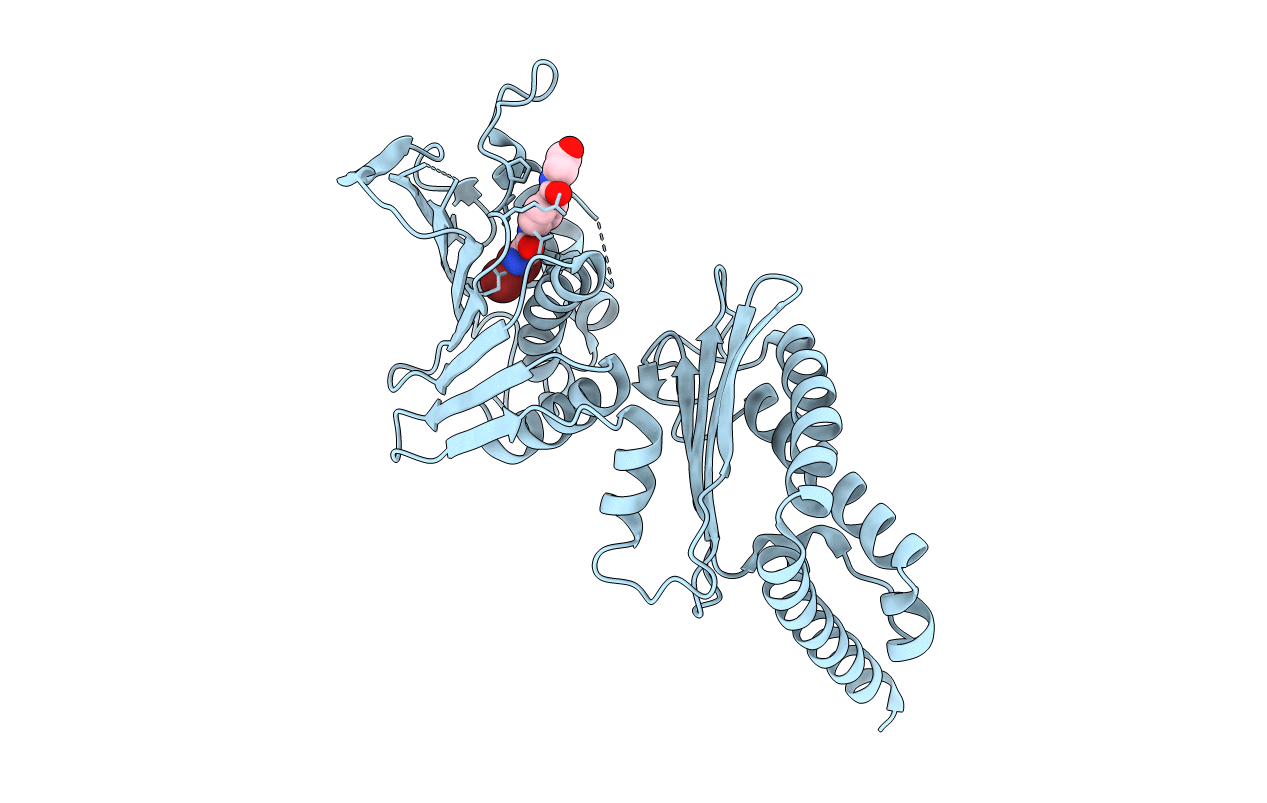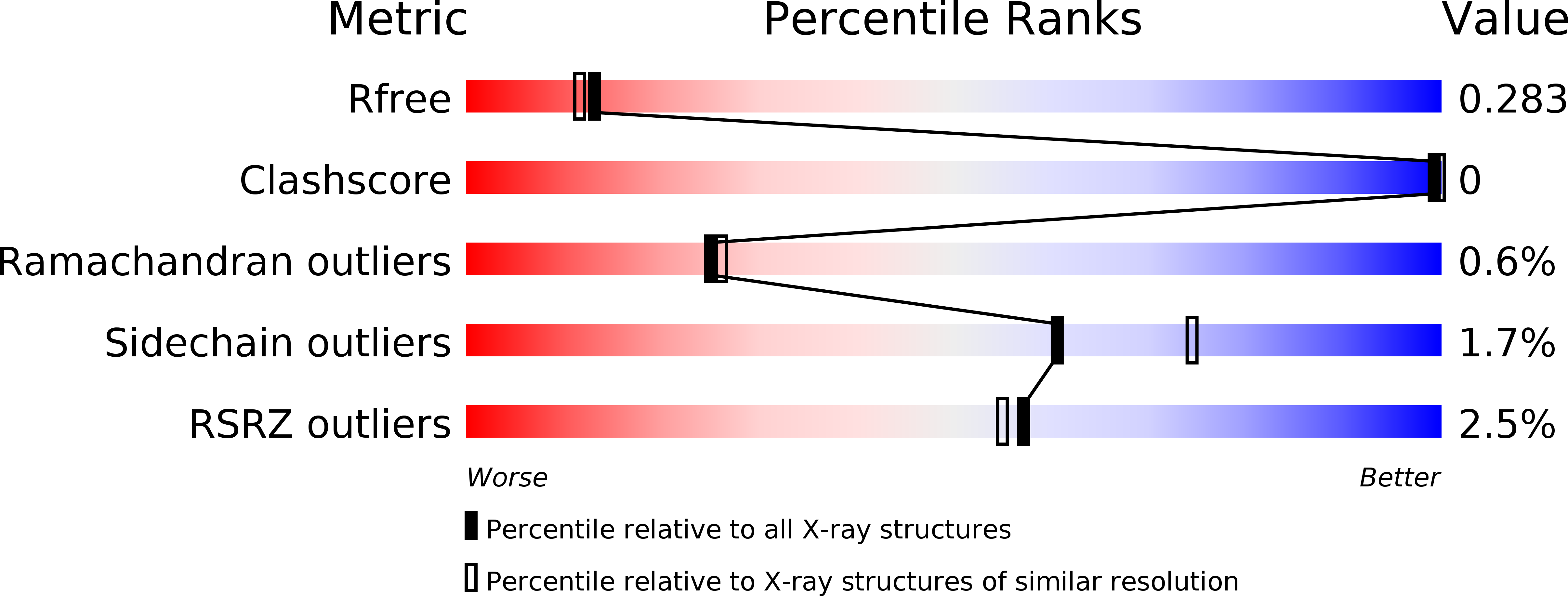
Deposition Date
2015-05-18
Release Date
2015-07-15
Last Version Date
2024-05-08
Entry Detail
PDB ID:
4ZVI
Keywords:
Title:
GYRASE B IN COMPLEX WITH 4,5-DIBROMOPYRROLAMIDE-BASED INHIBITOR
Biological Source:
Source Organism:
Escherichia coli (Taxon ID: 562)
Host Organism:
Method Details:
Experimental Method:
Resolution:
2.20 Å
R-Value Free:
0.28
R-Value Work:
0.22
R-Value Observed:
0.22
Space Group:
C 1 2 1


